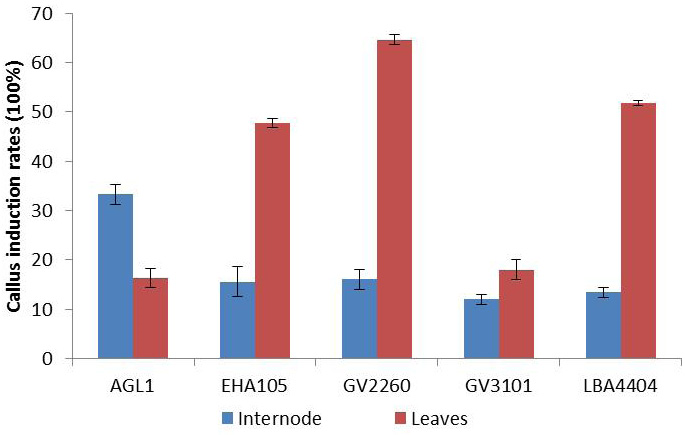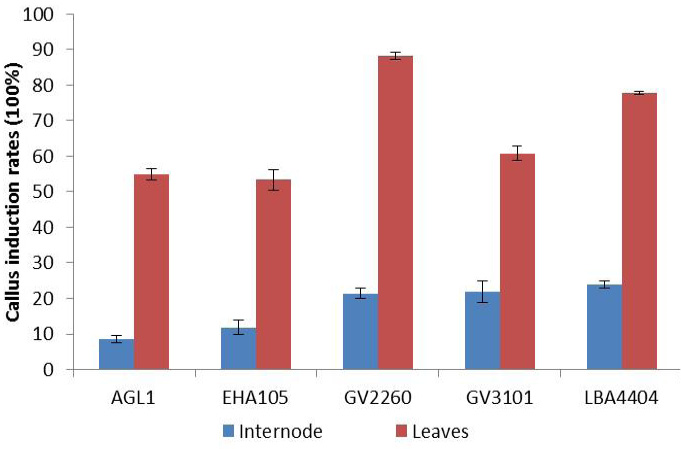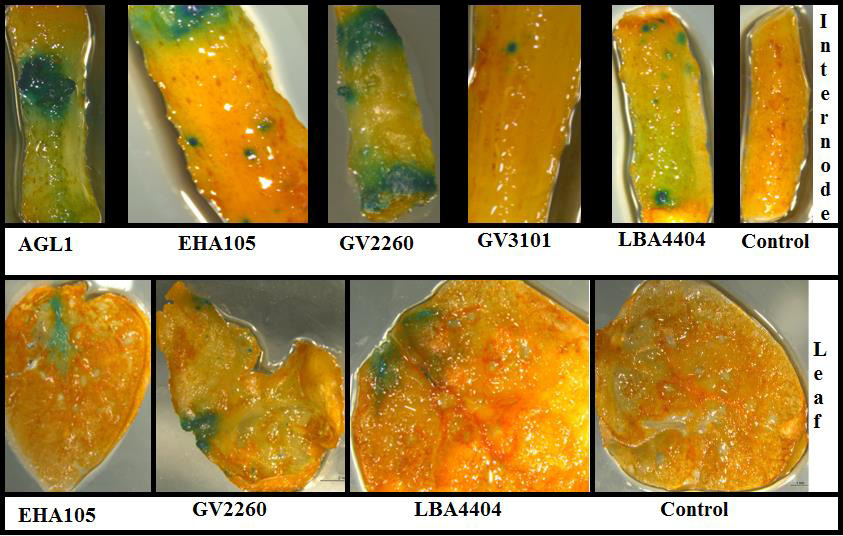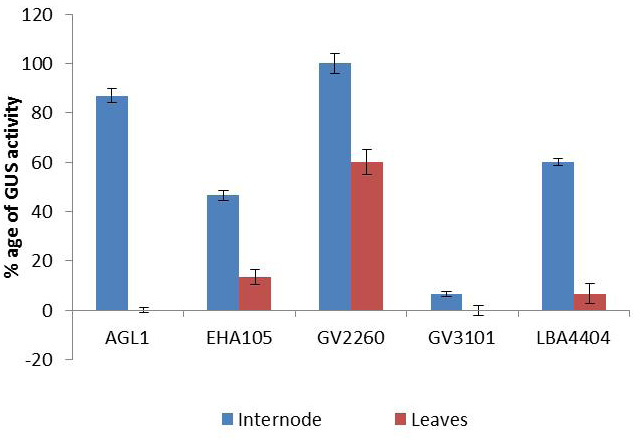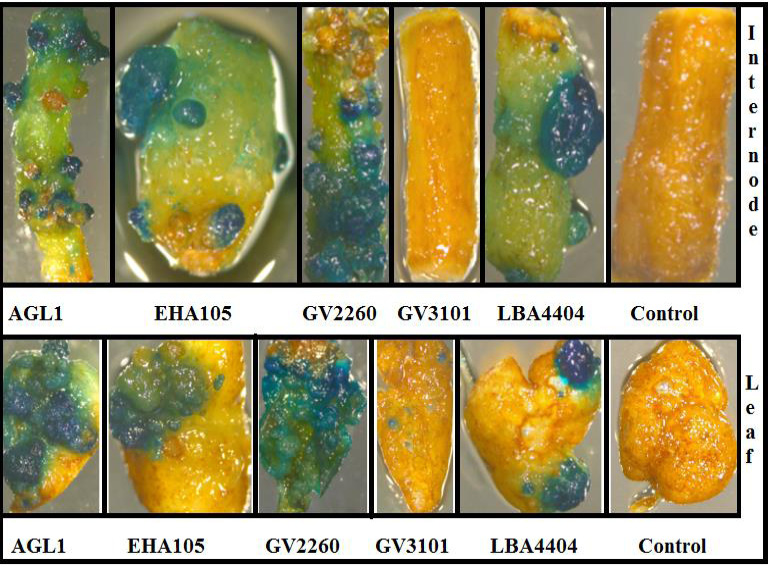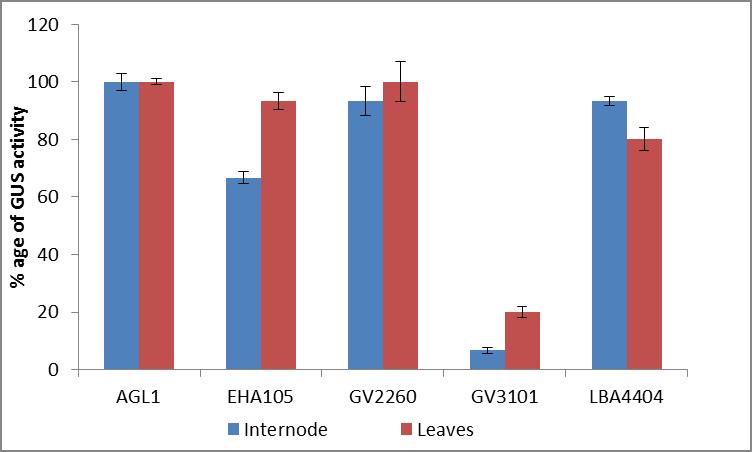Transformation Efficiency of Five Agrobacterium Strains in Diploid and Tetraploid Potatoes
Transformation Efficiency of Five Agrobacterium Strains in Diploid and Tetraploid Potatoes
Betül Ayça Dönmez, Sarbesh Das Dangol and Allah Bakhsh*
pBIN19 vector consists of the gusA gene with intron driven by Cauliflower Mosaic Virus (35S) promoter and nptii under the control of 35S Promoter. Each of these genes has nopaline sytnhase (NOS) terminator. The left and right borders are shown as LB and RB, respectively, in the figure.
The graph shows the percentages of callus induction for Desiree explants transformed with different Agrobacterium strains.
The percentage of callus induction for M6 explants transformed by the different Agrobacterium strains.
Histochemical GUS analyses of Desiree leaf and internode explants using five different Agrobacterium strains.
Desiree explants depicting the percentage of GUS positive transformed explants with different Agrobacterium strains in the study.
Histochemical GUS analyses of M6 leaf and internode explants using five different Agrobacterium strains.
M6 leaf and internode explants depicting the percentage of GUS positive transformed explants with different Agrobacterium strains in the study.






